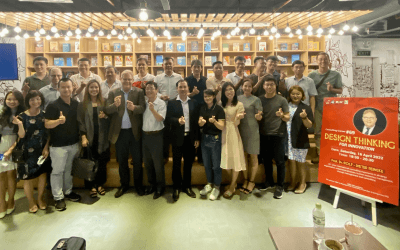 Leonard A. Schlesinger, Charles F. Kiefer, and Paul B. Brown
Leonard A. Schlesinger, Charles F. Kiefer, and Paul B. Brown
Leonard A. Schlesinger is the president of Babson College. Charles F. Kiefer is president of Innovation Associates. Paul B. Brown is a long-time contributor to the New York Times. They are the coauthors of Just Start: Take Action, Embrace Uncertainty, Create the Future (HBR Press 2012). Learn more at juststartthebook.com.
Are you frustrated? We know we are.
Most of us prepared hard for the future we expected, and yet things aren’t working out as we had planned. That’s true if you have been laid off, are a recent college graduate who feels underemployed, or are a manager facing constant upheavals at work, even if you are the boss, because you are wrestling with disruptive technologies and new competitors who seemingly come out of nowhere to upend your industry.

All of this is extremely confusing and unsettling.
This is not how we were told it was going to be. Growing up we were led to believe that the future was predictable enough, and if we studied hard we could obtain the work we wanted in an environment we understood, and we would live happy and successful lives.
It hasn’t exactly worked out that way (even for those of us who are happy). Many of us, maybe most, are not making progress on achieving the things we want.
We think the reason is pretty simple. The way we were taught to think and act works well in a predictable future, but not so much in the world as it is now.
You know the steps for dealing with a predictable universe:
1. You (or your parents, teachers, or bosses) forecast how the future will be.
2. You construct a number of plans for achieving that future, picking the optimal one.
3. You amass all the necessary resources (education, money, etc.) necessary to achieve your plan.
4. And then you go out and make that plan a reality.
We have become so indoctrinated with this way of thinking by our education and our organizations that it is more or less the only way we approach anything.
But what is a very smart approach in a knowable or predictable future is not smart at all when things can’t be predicted. And that fact is at the heart of the frustrations most of us feel. Things simply aren’t as predictable as they once were.
In a world where you can no longer plan or predict your way to success, what is the best way to achieve your goals? It’s a daunting question, but todaY – when saying “change seems to be the only constant” has become a cliché because it is so true – it’s one everyone has to resolve.
Here’s the central point of our new book, Just Start (and this blog post): When the future is unknowable (Is quitting your job and starting something new a good idea? Will the prototype we are developing at work find a market?), how we traditionally reason is extremely limited in predicting what will happen.
You need a different approach.
We have one. There is a proven method for navigating in an uncertain world, an approach that will complement the kind of reasoning we have all been taught. It will help you deal with high levels of uncertainty no matter what kind of situation you face. We know it works because entrepreneurs — the people who have to deal with uncertainty every day – use it successfully all the time. It is also the approach that is used by Babson College – the world’s number-one school for entrepreneurship, of which one of us is president.
Babson calls the approach “entrepreneurial thought and action,” but we use a simple shorthand and call it “Act, Learn, Build, Repeat.”
Based on the research of Saras D. Sarasvathy, of the University of Virginia’s Darden School of Business, and similar work by others at Babson College, this approach is a time-tested process for dealing with the unknown.
Put simply, in the face of an unknown future, entrepreneurs act. They deal with uncertainty not by trying to analyze it, or planning for every contingency, or predicting what the outcomes will be. Instead, they act, learn from what they find, and act again. More specifically the process looks like this.
1. Start with desire. You find/think of something you want. You don’t need a lot of passion, you only need sufficient desire to get started. (“I really want to start a restaurant, but I haven’t a clue if I will ever be able to open one.”)
2. Take a smart step as quickly as you can toward your goal. What’s a smart step? It’s one where you act quickly with the means at hand. What you know, who you know, and anything else that’s available. (“I know a great chef, and if I beg all my family and friends to back me, I might have enough money to open a place.”) You make sure that step is never going to cost more than it would be acceptable to you to lose should things not work out. And you bring others along to acquire more resources, spread the risk and confirm the quality of your idea.
3. Reflect and build on what you have learned from taking that step. You need to do that because every time you act, reality changes. Sometimes the step you take gets you nearer to what you want (“I should be able to afford something just outside of downtown”); sometimes what you want changes (“It looks likes there are an awful lot of Italian restaurants nearby. We are going to have to rethink our menu.”) If you pay attention, you always learn something. So after you act, ask: Did those actions get you closer to your goal? (“Yes. It looks like I will be able to open a restaurant.”) Do you need additional resources to draw even closer? (“Yes. I’ll need to find another chef. The one I know can only do Italian.”) Do you still want to obtain your objective? (“Yes.”)
4. Repeat.
Act. Learn. Build. Repeat. This is how successful serial entrepreneurs conquer uncertainty. What works for them will work for all of us.



